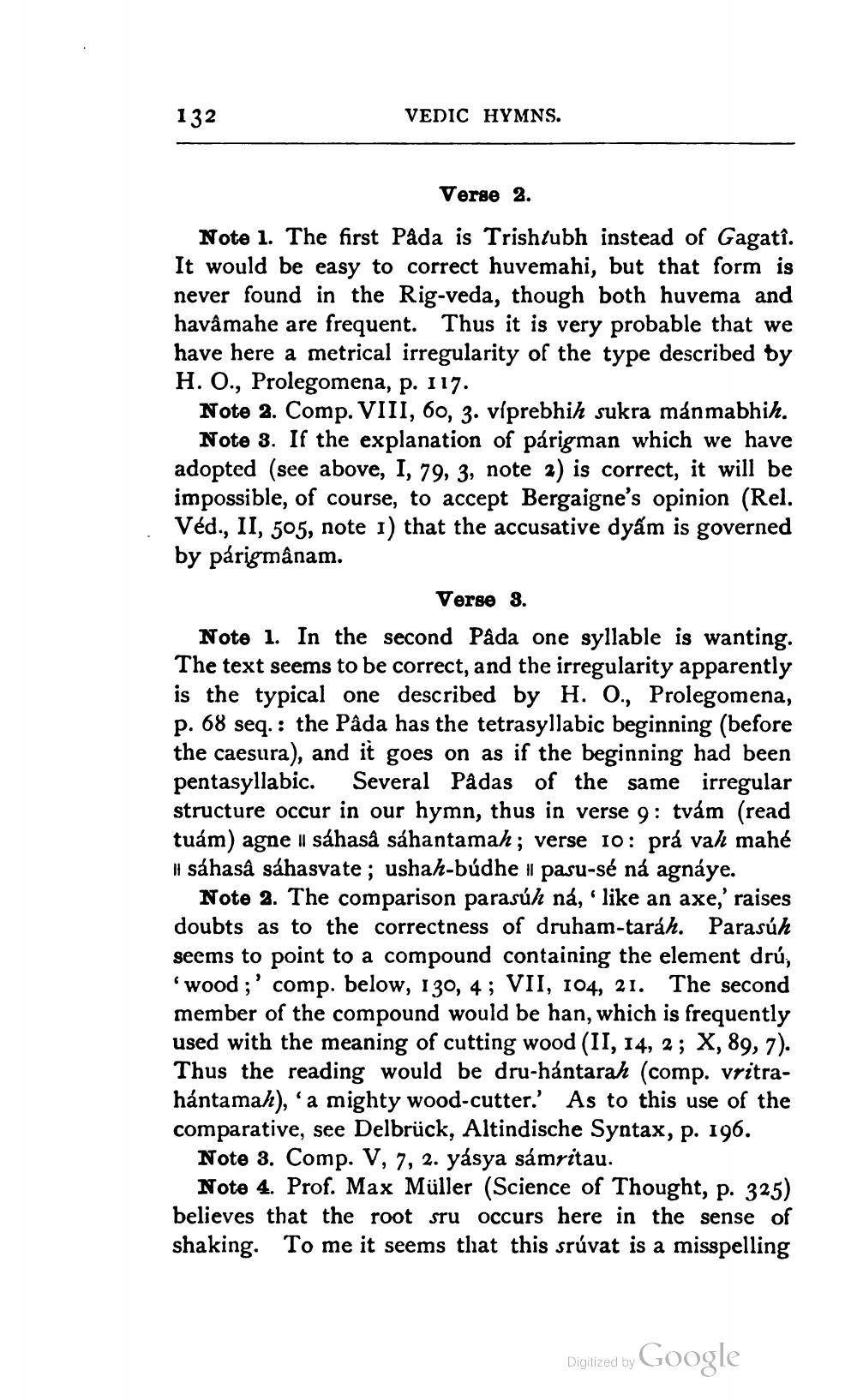________________
132
VEDIC HYMNS.
Verse 2. Note 1. The first Pada is Trishtubh instead of Gagatî. It would be easy to correct huvemahi, but that form is never found in the Rig-veda, though both huvema and havâmahe are frequent. Thus it is very probable that we have here a metrical irregularity of the type described by H. O., Prolegomena, p. 117.
Note 2. Comp. VIII, 60, 3. viprebhih sukra mánmabhih.
Note 3. If the explanation of párigman which we have adopted (see above, I, 79, 3, note 2) is correct, it will be impossible, of course, to accept Bergaigne's opinion (Rel. Véd., II, 505, note 1) that the accusative dyám is governed by párigmânam.
Verse 3. Note 1. In the second Päda one syllable is wanting. The text seems to be correct, and the irregularity apparently is the typical one described by H. O., Prolegomena, p. 68 seq. : the Pâda has the tetrasyllabic beginning (before the caesura), and it goes on as if the beginning had been pentasyllabic. Several Padas of the same irregular structure occur in our hymn, thus in verse 9: tvám (read tuám) agne il sáhasa sáhantamah; verse 10: pra vah mahé Il sáhasa sahasvate; ushah-búdhe i pasu-sé ná agnaye.
Note 2. The comparison parasúh ná, ' like an axe,' raises doubts as to the correctness of druham-taráh. Parasúh seems to point to a compound containing the element drú, 'wood;' comp. below, 130, 4; VII, 104, 21. The second member of the compound would be han, which is frequently used with the meaning of cutting wood (II, 14, 2; X, 89, 7). Thus the reading would be dru-hantarah (comp. vritrahántamah), 'a mighty wood-cutter. As to this use of the comparative, see Delbrück, Altindische Syntax, p. 196.
Note 3. Comp. V, 7, 2. yasya sámritau.
Note 4. Prof. Max Müller (Science of Thought, p. 325) believes that the root sru occurs here in the sense of shaking. To me it seems that this srúvat is a misspelling
Digitized by Google




